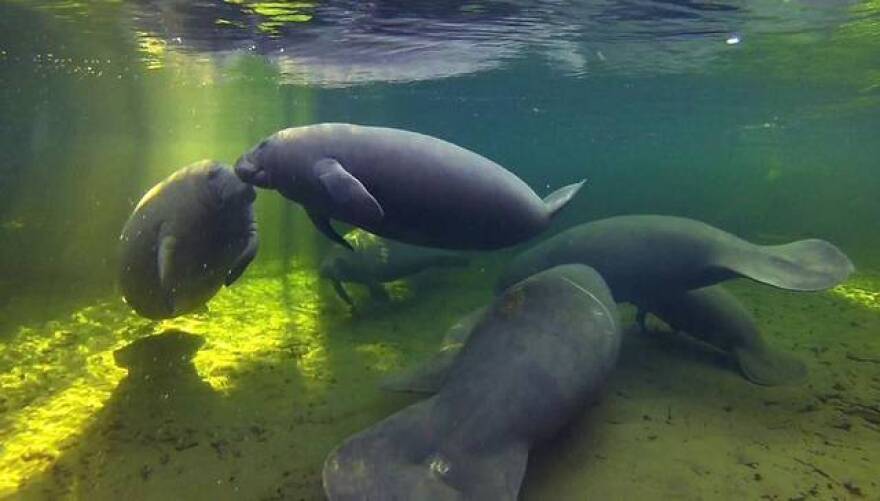Things are looking up for Florida's manatees.
The West Indian manatee has long been considered "endangered"-- a species on life support. But at the end of March, federal officials changed the manatees' status to “threatened,” which means their condition is less critical. In early 2017, officials counted more than 6,000 manatees in Florida’s waters.
But that's not all. A study issued last week by the U.S. Geological Survey's Patuxent Wildlife Research Center predicts that the Florida manatee, one of the subspecies of the West Indian manatee (the other is the Antillean manatee), will continue to see increases in population in the next 50 years or so.
"It [Florida's manatee population] may double in the next 40 to 50 years," said Michael Runge, a research ecologist at the Patuxent Wildlife Research Center. "It may stay stable; it may more than double. There’s a fair bit of uncertainty in our forecast. But it does look like the threats are low enough that the population is likely to continue to increase."
Manatees depend on seagrass for food. Runge says recent seagrass die-offs in Florida Bay and the Indian River Lagoon are not yet widespread enough to be a threat.
Boats are a more acute issue: Collisions with boats killed a record-breaking 104 manatees in Florida last year, and Runge says that by the time they’re adults, almost all manatees have been hit.
That’s why the Endangered Species Act and state laws require low-speed zones and other protective measures. Those protections will remain in place even though manatees are now considered “threatened,” not “endangered.”
Runge says that’s important.
"The threats that most matter are threats that affect the adult survival rates," he said. "If the adult mortality rate goes up too much, then manatees don’t live long enough to replace themselves and the population might show a decline."
Runge says what could limit population growth is a lack of warm water. Manatees have very little body fat, so in winter they stay in warm springs or in the warm-water discharges from power plants. But several Florida power plants have closed and researchers expect more closures over the coming decades.
The USGS study factors that in and still expects the manatee population to increase. The question, Runge says, is how much.





